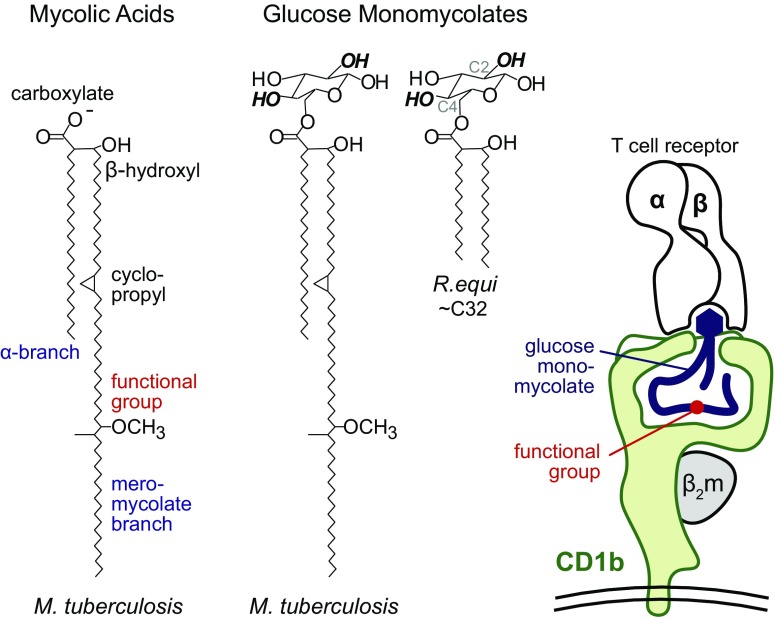Fig. 1.
Mycolic acid and glucose monomycolate antigens possess the same kinds of mycolyl groups, yet function differently in activation of T cells. T cell response to GMM absolutely requires the glucose head group, including the indicated hydroxyl groups at positions C2 and C4. T cell response to GMM proceeds normally when the lipid is truncated from C80 to C32 removing functional groups from its meromycolate chain (5). In contrast, the functional groups on mycolic acid lipid moiety strongly control T cell response (4, 12, 13). The CD1b–GMM–TCR image derives from solved crystal structures (7, 14), which suggest that the distal meromycolate chain carrying the functional groups might lie deep within CD1b. The positioning of free mycolic acid is modeled here (4) with molecular dynamics simulations, but its actual position within CD1b based on crystal structures is unknown.

